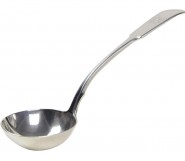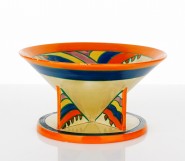Lot #8 - Mickey Bungkuni
-
Auction House:Mossgreen
-
Sale Name:Australian Indigenous & Oceanic Art
-
Sale Date:21 Jul 2015 ~ 6.30pm
-
Lot #:8
-
Lot Description:Mickey Bungkuni
(circa 1900-1970)
Wanjina (circa 1960)
natural earth pigments on bark
64 x 24 cm -
Provenance:Private Collection, New South Wales
-
Notes:Born into the Lantar Clan, whose Elalamerri estate lay across the Hunter River (Mariawala) basin to the north of Prince Frederick Harbour, Micky Bungkuni was was the senior Wunambal lawman resident at Mowanjum in the 1960s, a position he retained until his death in 1978. Bungkuni's totemic affiliations including the Spotted Nightjar and the Brolga. His clan totem was Lantar - a small, yellow-flowered, holly-leaved, pea-flower, Bossiaea bossiaeoides, locally called Emu-flower. As with many pre-1970s paintings from the Kimberley this painting is on an irregularly trimmed sheet of bark. The texture of the roughly trimmed bark reflects the surfaces of the rock shelters, on which the Wanjina paintings are found. Similarly the coarsely applied ochres reflect the weathered appearance of the cave paintings. Paintings on both caves or on bark, prior to 1975 were usually done on unprepared surfaces in ochres mixed only with water and without the aid of fixatives. The upswept rays that crown the head of this Wanjina, common to Wanjina paintings done by Bungkuni are identified by anthropologist John McCaffrey as 'bundles of hair' arranged in a complex hairdo - they 'do not represent lightning'. These in turn grow from a broader band of red ochre 'lightning' that flows from the head to outline the entire body. The particular style of head-treatment is sometimes considered to be associated with Kaiaras or 'Sea Wanjinas', However investigation reveals shows that this particular method of depicting Wanjinas is a regional style and does not necessarily confine the nature of the Wanjina to the marine environment. As with other Wanjina paintings, the black oval of the sternum (biran-biran) rests on the chest and a hairbelt (ngunuru or wanala) separates the lower limbs from the abdomen. The stippled infill is said to represent rain (kulingi) streaming from the solitary storm clouds that march across the Kimberley in the early wet season. The label attached to the rear of the painting indicates an Arnhem Land provenance but it is likely that the original label has been dislodged, perhaps at the outlet where it was purchased and a label associated with another work has been attached in its place. Kim Akerman
-
Estimate:A$7,000 - 10,000
-
Realised Price:
-
Category:Art
This Sale has been held and this item is no longer available. Details are provided for information purposes only.










